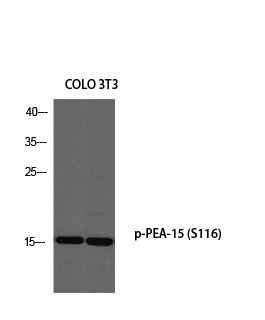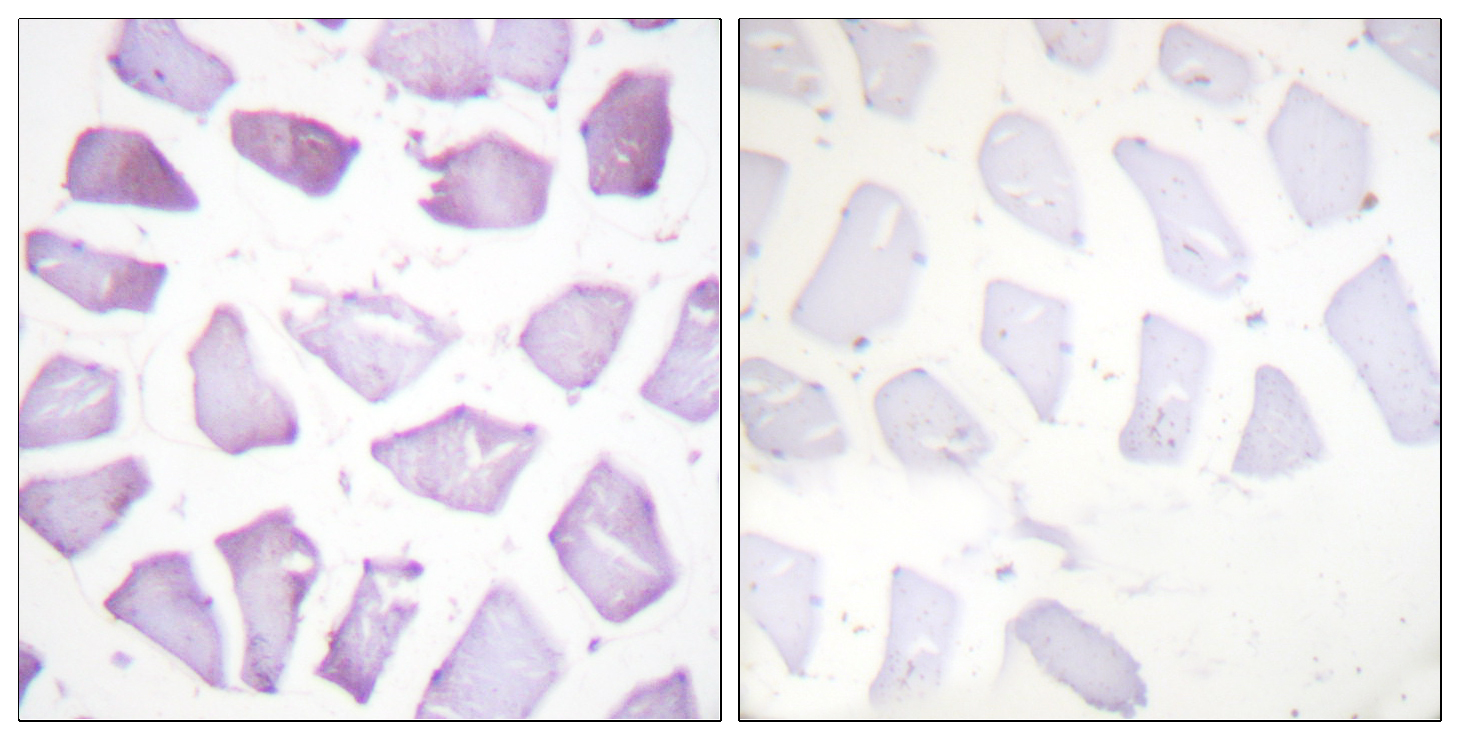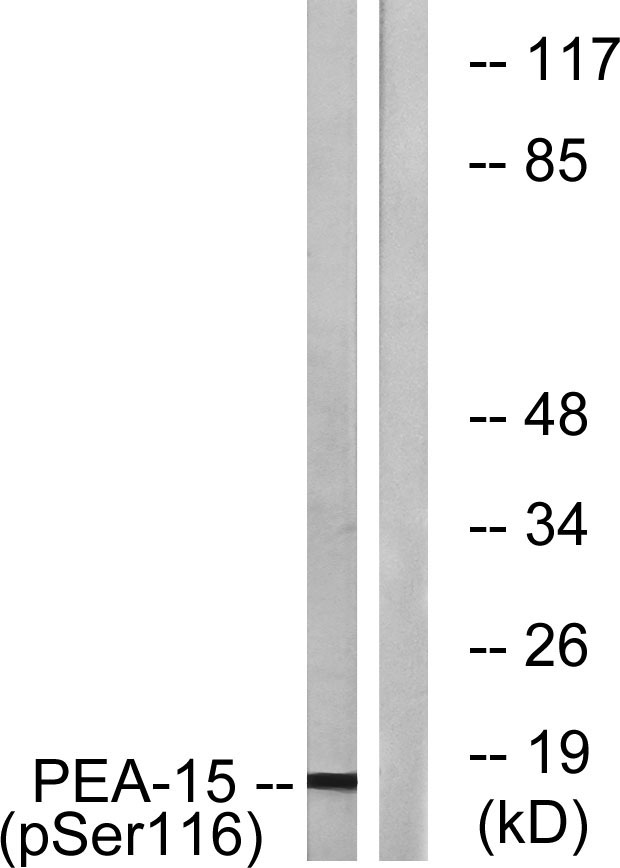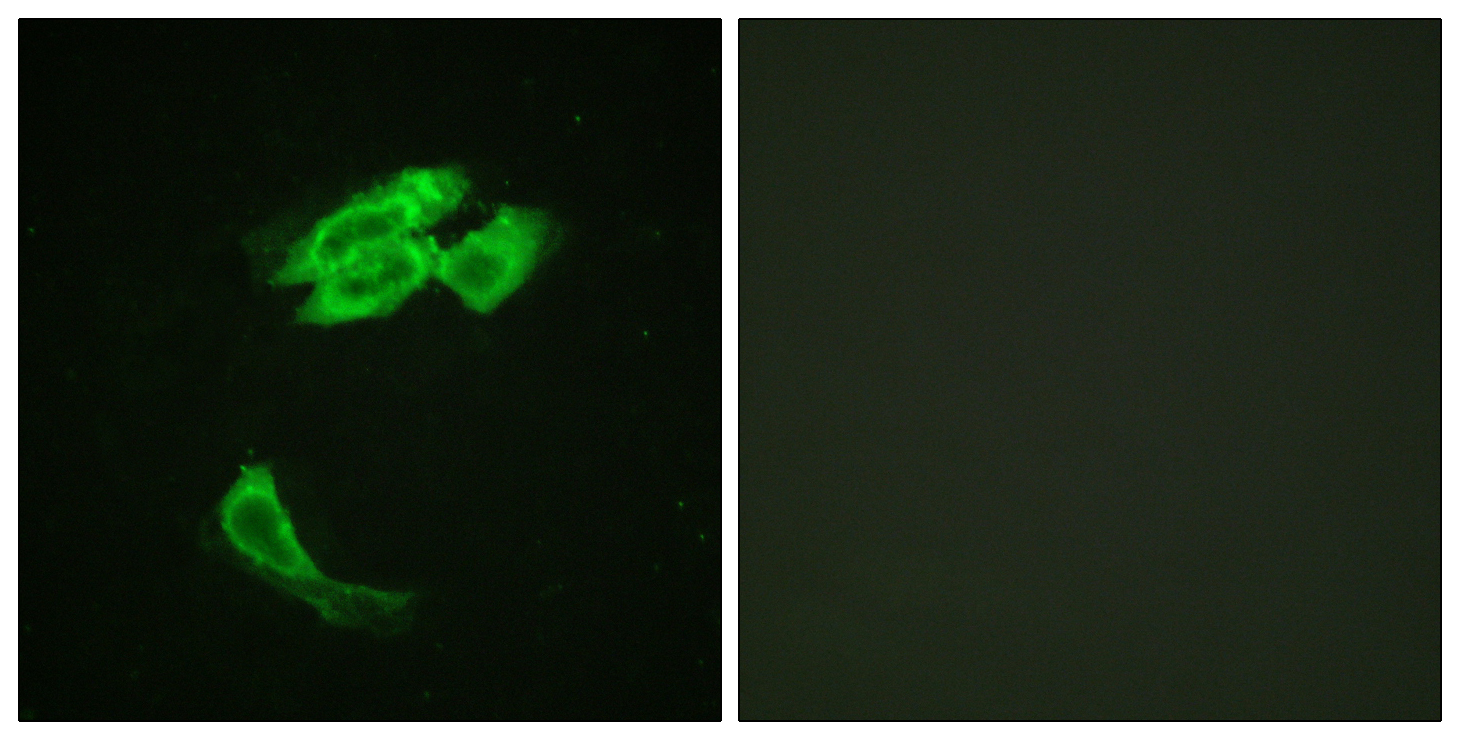PEA-15 (phospho Ser116) Polyclonal Antibody
- Catalog No.:YP0669
- Applications:WB;IHC;IF;ELISA
- Reactivity:Human;Mouse;Rat;Monkey
- Target:
- PEA-15
- Gene Name:
- PEA15
- Protein Name:
- Astrocytic phosphoprotein PEA-15
- Human Gene Id:
- 8682
- Human Swiss Prot No:
- Q15121
- Mouse Gene Id:
- 18611
- Mouse Swiss Prot No:
- Q62048
- Rat Gene Id:
- 364052
- Rat Swiss Prot No:
- Q5U318
- Immunogen:
- The antiserum was produced against synthesized peptide derived from human PEA-15 around the phosphorylation site of Ser116. AA range:81-130
- Specificity:
- Phospho-PEA-15 (S116) Polyclonal Antibody detects endogenous levels of PEA-15 protein only when phosphorylated at S116.
- Formulation:
- Liquid in PBS containing 50% glycerol, 0.5% BSA and 0.02% sodium azide.
- Source:
- Polyclonal, Rabbit,IgG
- Dilution:
- WB 1:500 - 1:2000. IHC 1:100 - 1:300. ELISA: 1:5000.. IF 1:50-200
- Purification:
- The antibody was affinity-purified from rabbit antiserum by affinity-chromatography using epitope-specific immunogen.
- Concentration:
- 1 mg/ml
- Storage Stability:
- -15°C to -25°C/1 year(Do not lower than -25°C)
- Other Name:
- PEA15;Astrocytic phosphoprotein PEA-15;15 kDa phosphoprotein enriched in astrocytes;Phosphoprotein enriched in diabetes;PED
- Observed Band(KD):
- 15kD
- Background:
- phosphoprotein enriched in astrocytes 15(PEA15) Homo sapiens This gene encodes a death effector domain-containing protein that functions as a negative regulator of apoptosis. The encoded protein is an endogenous substrate for protein kinase C. This protein is also overexpressed in type 2 diabetes mellitus, where it may contribute to insulin resistance in glucose uptake. Alternative splicing results in multiple transcript variants. [provided by RefSeq, Jul 2014],
- Function:
- function:Blocks Ras-mediated inhibition of integrin activation and modulates the ERK MAP kinase cascade. Inhibits RPS6KA3 activities by retaining it in the cytoplasm (By similarity). Inhibits both TNFRSF6- and TNFRSF1A-mediated CASP8 activity and apoptosis. Regulates glucose transport by controlling both the content of SLC2A1 glucose transporters on the plasma membrane and the insulin-dependent trafficking of SLC2A4 from the cell interior to the surface.,PTM:Phosphorylated by protein kinase C and calcium-calmodulin-dependent protein kinase. These phosphorylation events are modulated by neurotransmitters or hormones.,similarity:Contains 1 DED (death effector) domain.,subcellular location:Associated with microtubules.,subunit:Binds RPS6KA3, MAPK3 and MAPK1. Transient interaction with PLD1 and PLD2 (By similarity). Interacts with CASP8 and FADD.,tissue specificity:Ubiquitously expressed. Mo
- Subcellular Location:
- Cytoplasm. Associated with microtubules.
- Expression:
- Ubiquitously expressed. Most abundant in tissues such as heart, brain, muscle and adipose tissue which utilize glucose as an energy source. Lower expression in glucose-producing tissues. Higher levels of expression are found in tissues from individuals with type 2 diabetes than in controls.
- June 19-2018
- WESTERN IMMUNOBLOTTING PROTOCOL
- June 19-2018
- IMMUNOHISTOCHEMISTRY-PARAFFIN PROTOCOL
- June 19-2018
- IMMUNOFLUORESCENCE PROTOCOL
- September 08-2020
- FLOW-CYTOMEYRT-PROTOCOL
- May 20-2022
- Cell-Based ELISA│解您多样本WB检测之困扰
- July 13-2018
- CELL-BASED-ELISA-PROTOCOL-FOR-ACETYL-PROTEIN
- July 13-2018
- CELL-BASED-ELISA-PROTOCOL-FOR-PHOSPHO-PROTEIN
- July 13-2018
- Antibody-FAQs
- Products Images

- Western blot analysis of COLO 3T3 using p-PEA-15 (S116) antibody. Antibody was diluted at 1:500

- Immunohistochemistry analysis of paraffin-embedded human skeletal muscle, using PEA-15 (Phospho-Ser116) Antibody. The picture on the right is blocked with the phospho peptide.

- Western blot analysis of lysates from COS7 cells treated with INSULIN 0.01U/ML 15', using PEA-15 (Phospho-Ser116) Antibody. The lane on the right is blocked with the phospho peptide.

